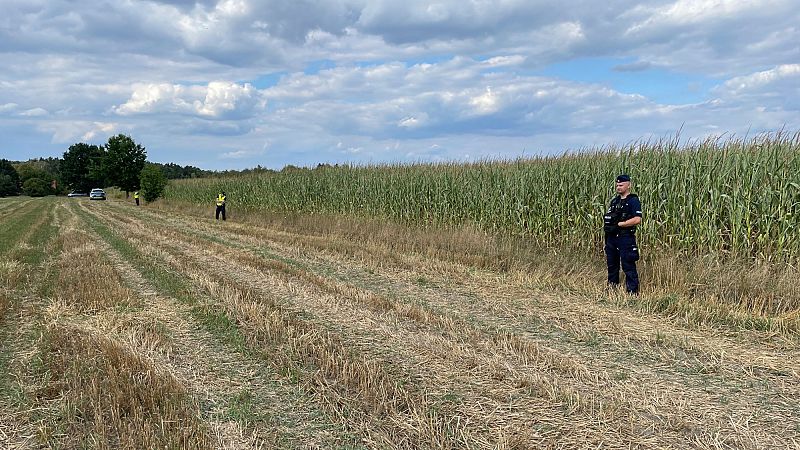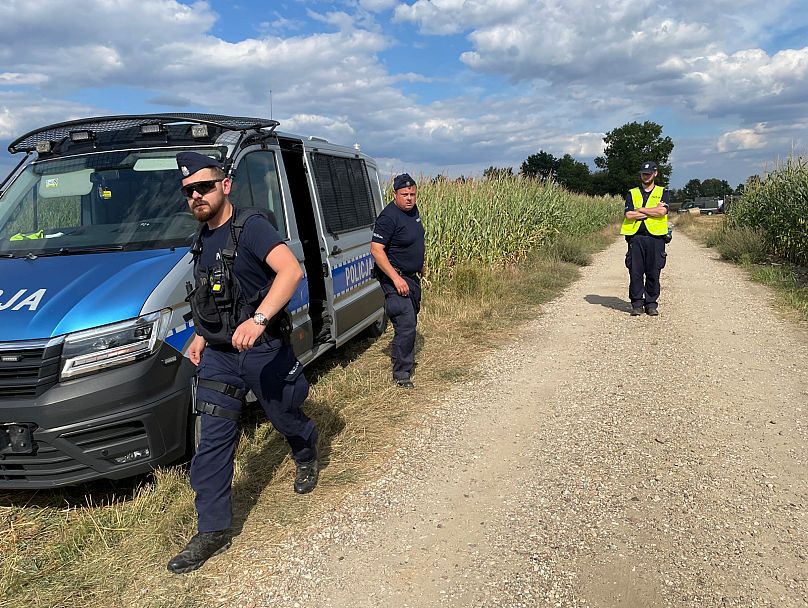Expert: drone incidents will continue in Poland as long as there is a war across our border

The explosion of an unmanned aerial vehicle in a small village in the Lublin region on Tuesday night is yet another in a series of incidents that have become part of the war on Ukraine since Russia's all-out invasion in 2022. The problem affects not only Poland, but the entire eastern flank of NATO and several other countries in Eastern Europe.
In February 2024 and February 2025, a total of three Russian Shahed drones exploded on Moldovan territory; in September 2024, Russian drones violated the airspace of Latvia and Romania. As then Lithuanian Foreign Minister Gabrielius Landsbergis commented on Platform X: "Incidents unthinkable three years ago are now treated as routine. Nothing should land in Ukraine, Latvia or anywhere on NATO territory, but this is a new reality made possible by our inaction. Lithuania will of course support a strong allied response."
In an interview with Euronews, Andrzej Kiński, a military expert, attempts to assess the level of threat to civilians.
"Considering that this conflict has been going on for more than three years, there have been several such incidents in Poland (at least the ones we know about), and there have been two casualties. Considering how many people die in traffic accidents or other unfortunate incidents, however, this is marginal. Of course, they should not be underestimated - every human life is priceless - but nevertheless the scale of the real danger is so far not large."
Kiński is also in no doubt that one should get used to the idea that weapons, used by the warring parties to wage war, could appear over Polish territory.
"If the conflict continues, the risk of further incidents of this kind is significant. We do not fully know the nature of the incident in Osiny. Was it a provocation? Was it a technical fault? If these are deliberate, they could escalate. If they are accidental events, this is where the calculus of probability decides."
'Russian provocation'?
The day after the explosion in Osiny, during a briefing with journalists, Deputy Prime Minister and Minister of National Defence Wladyslaw Kosiniak-Kamysz described the explosion in Osiny as a "provocation of the Russian Federation". But Andrzej Kiński is not so sure:
"On the basis of the discussion available to the public of this material evidence that was found at the scene, I cannot unequivocally state that this was a provocation - Russian, Belarusian, Ukrainian, tinkerers, aliens, etc. - and that it was a provocation of the Russian Federation. I cannot say without a certain amount of doubt that it was any kind of provocation".
The expert added: "Certain findings at the site of the downed drone make me cautious about this [the minister's] statement. It requires further analysis and we may never know the truth."
The latest findings of the Regional Prosecutor's Office in Lublin seem to confirm the expert's caution. According to the investigators, the unmanned aircraft did not come from either Russia or Ukraine. "Everything points to the fact that it flew in from Belarus", prosecutor Grzegorz Trusiewicz said on Thursday, referring to the drone that fell in Osiny. Asked what direction the drone was flying in, he explained that this was not under investigation.
Why did Polish radars fail to pick up the drone?
The key question is why Polish air defence systems failed to detect the incoming drone.
Major General Dariusz Malinowski, deputy commander of the Operational Command of the Armed Forces said during a briefing on Wednesday:
"Our assessment is that this drone was designed to be very difficult to detect. It probably flew very low to avoid our radar field".
Kiński confirms this assessment, but explains the problem in more detail:
"The radiolocation field in peacetime extends over our country from an altitude of three thousand metres upwards, i.e. below three thousand there is no continuous radiolocation field. In a crisis state, when other radiolocation stations, which are not necessarily switched on non-stop, come into use, it is possible to obtain coverage from a height of 500 metres."
In fact, the problem is even more complex, as the expert explains: "Our eastern border is more than 900 kilometres long. It is not possible to cover this entire belt with radiolocation means and be able to detect all targets flying at heights from 10 metres to 50 kilometres."
He also points to other problems associated with a dense radar network: "These radars generate strong microwave radiation, which is harmful to humans as well as livestock with prolonged exposure. That is why these radar stations are placed in peacetime such surroundings so that they have an optimal field of observation on the one hand, and so that their radiation is not harmful to bystanders on the other."
In May 2024, the head of the Ministry of Defence approved a contract for the delivery of the 'BARBARA' radio-telemetry aerostat system in 2027, worth approximately $960 million. The system is to consist of four aerostats deployed along Poland's eastern and north-eastern borders, with an object detection range of more than 300 kilometres by each post.
However, Kiński is sceptical about the usefulness of the system, stating that 'BARBARA' will not perform well in a period of active conflict.
"It is a peacetime piece of equipment, albeit one that performs, thanks to its ability to 'look' deep into enemy territory, an important role in warning of an attack. However, in the event of a conflict, it can be destroyed in its first minutes. It is, unfortunately, a vulnerable asset because the adversary knows its location. Aiming a ballistic missile at the ground apparatus accompanying the aerostat and neutralising it is not a major problem."
Will we find out what happened in Osina?
The expert is not hopeful of a full explanation of the circumstances of the Osiny incident: "I don't think we are going to find out anything more. Consider at least these previous incidents. No official report has been published about the Przewodów incident of November 2022 or the remains of the rocket that was found near Bydgoszcz at the end of April 2023. We are reliant on what the politicians will tell us, because in fact the military will say what their civilian superiors tell them to say."
The situation in the region remains tense and drone incidents are likely to continue until the conflict in Ukraine is over.
As the expert states, the citizens of many European countries are aware of the duration of this war, information about it appears every day in the top 'ten' news. However, they do not feel the threat as much as the countries directly on the front line.
"Poland plays a key role - this must be emphasised - in supplying Ukraine with military equipment, but not only. Also in humanitarian aid, due to the fact that it borders Ukraine for a long stretch. The decision to establish a transport hub in Rzeszów makes Poland one of the countries that bears the direct consequences of the conflict".
The expert also recalls that there are large Ukrainian cities within a short distance from the Polish border, which contain facilities of military importance or critical infrastructure:
"They are the target of Russian attacks, and therefore - whether incidentally and accidentally or consciously - there are also violations of Polish territory by flying objects. Their appearance in this, rather than any other place, is a direct result of the ongoing conflict."
NATO Secretary General Mark Rutte referred to the drone explosion in Osiny at a press conference with Ukrainian President Volodymyr Zelenski on Friday and stressed the Alliance's solidarity with Poland. "We are working very closely with our colleagues from Poland. Without revealing details, but indeed they should respond in some way to this latest incident. That is why we are watching it closely - please have no doubt about that," Rutte said.
Today


